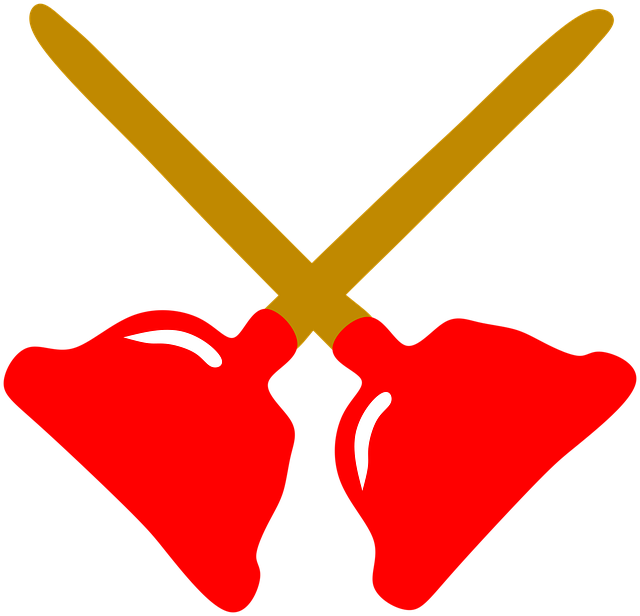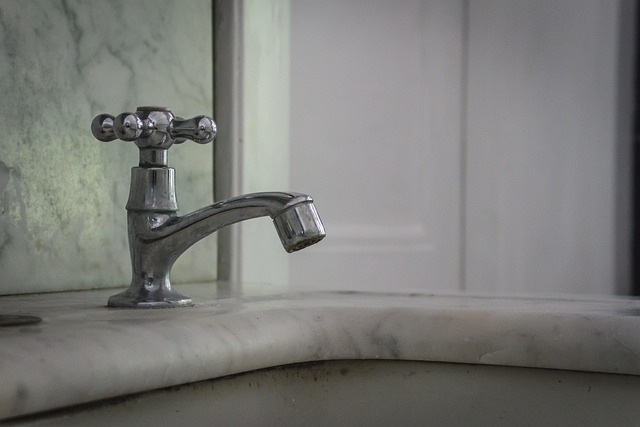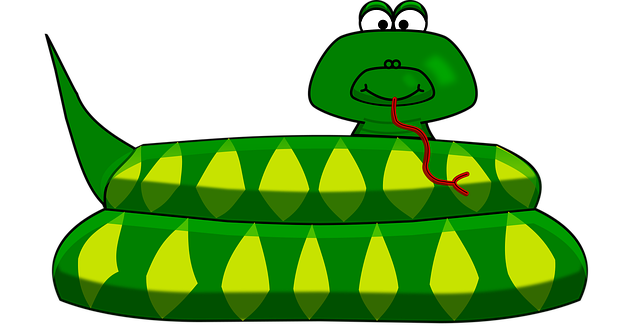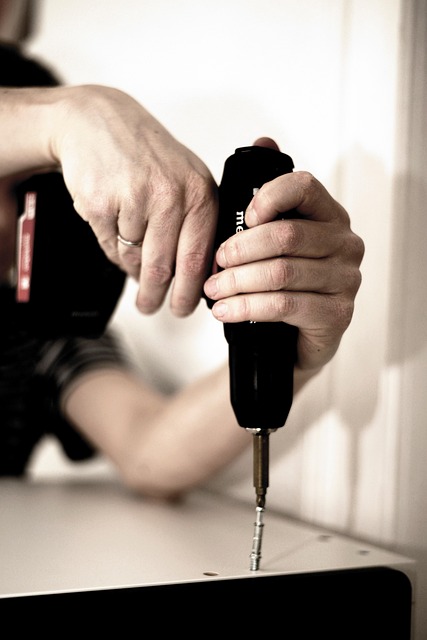Clogged drains are a common household problem caused by grease, hair, and improper disposal. DIY solutions like plungers, baking soda and vinegar, or plumber's snakes effectively clear obstructions without costly professionals or harsh chemicals. Plungers create suction to dislodge blockages, while natural remedies like baking soda and vinegar tackle mild clogs. For tougher cases, a plumber's snake navigates tight spaces. Regular maintenance with these methods keeps drains healthy and prevents future clogs.
Are you tired of dealing with clogged drains? Learn how to refresh your pipes naturally using citrus peels, a simple and eco-friendly solution. This comprehensive guide covers everything from understanding the root causes of blocked drains to exploring powerful DIY methods. Discover the effectiveness of traditional tools like plungers, natural remedies combining baking soda and vinegar, and alternative options like plumber’s snakes. Equip yourself with preventive measures for regular drain maintenance.
- Understanding Clogged Drains: Common Causes and Impact
- Traditional Methods: Plunger Use and Its Effectiveness
- Natural Remedies: The Power of Baking Soda and Vinegar
- Exploring Alternative Tools: Plumber's Snake for Deep Cleaning
- Step-by-Step Guide: DIY Clogged Drain Solutions at Home
- Preventive Measures: Regular Maintenance for Healthy Drains
Understanding Clogged Drains: Common Causes and Impact

Clogged drains are a common household issue that can cause significant frustration and inconvenience. Understanding the root causes is the first step in addressing this problem effectively. The most frequent culprits include grease buildup from cooking, hair and other debris from personal grooming, and improper disposal of substances like coffee grounds or feminine products. These obstructions can lead to slow drainage or complete blockages, resulting in backflows and potentially damaging plumbing systems.
When a drain clogs, it not only disrupts daily routines but also poses health and safety hazards. Unaddressed clogs can foster the growth of bacteria and foul odors, creating an unpleasant environment. Moreover, severe cases may require professional intervention, which can be costly. Simple DIY solutions like using a plunger, mixing baking soda and vinegar for natural unclogging, or employing a plumber’s snake are effective remedies. These methods are often preferred due to their accessibility, cost-effectiveness, and minimal environmental impact compared to conventional chemical drain cleaners.
Traditional Methods: Plunger Use and Its Effectiveness

Traditional Methods: Plunger Use and Its Effectiveness
When it comes to DIY clogged drains, one of the most common and effective tools is the plunger. This simple device uses air pressure to break up and dislodge obstructions in your drains. By creating a seal around the drain opening, the plunger’s up-and-down motion generates powerful suction that can clear even stubborn clogs. Unlike chemical drain cleaners, plunger use offers a natural unclogging solution that’s safe for septic systems and environmentally friendly.
While some might opt for quicker solutions like plumber’s snakes or chemical drain cleaners, plungers remain a go-to choice for many. Baking soda and vinegar combinations are also popular DIY remedies, as they create a chemical reaction that can help break down blockages. However, for more severe clogs, a plumber’s snake—a flexible metal cable inserted into the drain to break up or pull out obstructions—may be necessary. Yet, even in such cases, plunger use beforehand can significantly enhance the effectiveness of these professional tools.
Natural Remedies: The Power of Baking Soda and Vinegar

Natural remedies for unblocking drains are a popular choice for many homeowners looking to avoid harsh chemical cleaners. Two simple yet effective ingredients that often top this list are baking soda and vinegar. This DIY approach to Drain cleaning has gained traction due to its cost-effectiveness and eco-friendliness.
When used in conjunction, baking soda and vinegar create a powerful cleaning duo. First, pour a cup of baking soda down the drain, followed by half a cup of white vinegar. The mixture will fizz and bubble, helping to dislodge any buildup or hair that may be causing the clog. This natural unclogging method is an excellent alternative to using a plunger or a plumber’s snake, offering a gentle yet thorough clean without damaging pipes or leaving behind harsh residues.
Exploring Alternative Tools: Plumber's Snake for Deep Cleaning

When it comes to tackling stubborn clogged drains, reaching for conventional chemical cleaners isn’t always the best option. Many homeowners are now opting for natural unclogging methods, which not only save costs but also contribute to a greener environment. One effective tool in your DIY clogged drains arsenal is a plumber’s snake—a flexible metal cable that can reach deep into pipes to dislodge and remove obstructions.
This method is particularly useful when traditional plunging with baking soda vinegar solutions doesn’t yield results. The plumber’s snake, also known as a drain auger, can navigate tight bends and hard-to-reach areas, making it an indispensable tool for deep cleaning. By combining the snake with natural cleaners like baking soda and vinegar, you can efficiently clear out any obstructions without resorting to harsh chemicals.
Step-by-Step Guide: DIY Clogged Drain Solutions at Home

DIY Clogged Drain Solutions at Home
If you’re dealing with a clogged drain, before reaching for chemical cleaners, consider trying some natural unclogging methods. A simple and effective DIY solution involves a combination of baking soda and vinegar. Start by pouring 1/2 cup of baking soda down the drain. This will coat the insides of the pipes, neutralizing any odors and starting to break up the clog. Next, slowly pour 1 cup of white vinegar into the drain. The mixture will fizz and bubble as it reacts, helping to dislodge any buildup. For tougher clogs, repeat this process a few times, allowing the mixture to sit for 30 minutes between applications.
For stubborn cases where plunging doesn’t work, consider using a plumber’s snake. This flexible metal cable is inserted into the drain and manually twisted to break up or retrieve whatever is causing the blockage. It’s an inexpensive tool that can save you the hassle of calling a professional. Remember, these natural methods are safe for pipes and effective in clearing clogs without resorting to harsh chemicals. Always keep a plunger handy as part of your DIY clogged drain toolkit for quick and easy cleaning at home.
Preventive Measures: Regular Maintenance for Healthy Drains

Maintaining healthy drains is key to preventing clogs and ensuring smooth water flow. Regular upkeep can go a long way in avoiding costly and inconvenient plumbing issues. One simple preventive measure is to employ natural unclogging methods like baking soda and vinegar. Combining equal parts of these two ingredients and pouring the mixture down your drains can help break up grease, soap scum, and other debris that may be building up.
Additionally, using a plunger regularly can be an effective DIY clogged drain solution. For more stubborn clogs, consider investing in a plumber’s snake—a flexible metal cable that can reach and dislodge obstructions from deep within the pipe. While these home remedies are accessible and eco-friendly alternatives to harsh chemical cleaners, if your drains remain problematic or experience frequent blockages, it might be time to consult a professional plumber for a thorough drain cleaning service.
